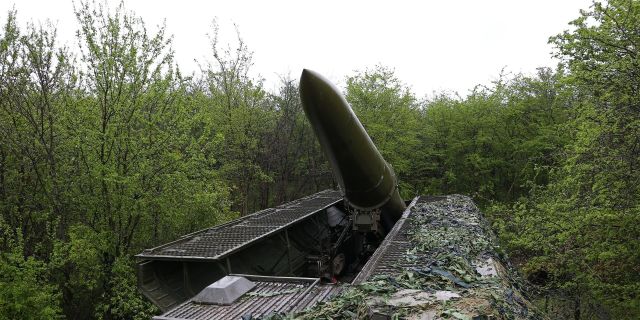Russia will transfer missiles capable of carrying nuclear warheads to Belarus
Russia will supply Iskander-M complexes to Minsk in the coming months, President Vladimir Putin said at a meeting with his Belarusian counterpart Alexander Lukashenko in St. Petersburg.
Maria Knight (Mariya Knight),
Johnny Hallam,
Helen Regan
On Saturday, June 25, President Vladimir Putin announced that Russia would transfer Iskander-M missile systems capable of carrying nuclear weapons to its ally Belarus.
At a meeting in St. Petersburg, Putin told Belarusian President Alexander Lukashenko that "Iskander-M tactical missile systems can use both ballistic and cruise missiles, both in conventional and nuclear versions."
Throughout its special military operation, Moscow has used Minsk as its base, including for conducting many maneuvers on the territory of Ukraine, as evidenced by intelligence data collected by NATO aircraft.
According to the transcript of the meeting of the presidents, Lukashenko informed Putin of serious concern about the flights of the United States and NATO aircraft "which are training to carry nuclear warheads and nuclear charges." "This is very annoying for us," the Belarusian leader said.
He asked Putin to consider the possibility of a "mirror response" to the actions of the Western military or to adapt Russian aircraft currently on the territory of Belarus so that they "could carry nuclear charges."
Putin replied that there was "no need" to respond to the United States and NATO in a mirror image, and suggested that Belarus re-equip its own Su-25s so that they could carry nuclear weapons.
"This modernization should be carried out at aviation plants in Russia, but we will agree with you how to do it. And start training the flight crew accordingly," the Russian leader said.
What are the Iskander-M missile systems?
Iskander-M is a Russian operational-tactical missile system that can carry both conventional and nuclear warheads, and their maximum range reaches 500 kilometers.
These complexes are equipped with both optical and inertial guidance systems, and they are capable of striking targets with a range of projectiles, including cluster bombs, vacuum bombs, bunker busters and electromagnetic pulse weapons.
Iskander-M complexes were first used in 2008 during the Russian-Georgian conflict, when Russia used them to launch strikes in Gori.
G7 and NATO Summits
The meeting of the Russian and Belarusian leaders took place on the eve of a week of summits in Europe, where the ongoing conflict in Ukraine will be the central topic.
The leaders of Japan, Canada, the United States, Great Britain, France, Italy, the European Union and Germany will meet at the G7 summit on Monday, June 27.
During his visits to Germany and Spain, US President Joe Biden hopes to announce the introduction of new sanctions and the provision of a new portion of military assistance that Washington will provide together with its European allies. President of Ukraine Volodymyr Zelensky will take part in the G7 and NATO summits. Zelensky continues to ask the United States and other Western countries to increase aid to Ukraine.
During Saturday's address, the Ukrainian leader said that "packages of sanctions against Russia are not enough." He called on Western partners to provide Ukraine with more weapons.
"Air defense systems — modern systems that our partners have — should not be at landfills or in storage, but in Ukraine, where they are needed now," he said.
Meanwhile, on Saturday, June 25, the armed forces of Ukraine confirmed that they had already begun using modern multiple rocket launchers provided to them by the United States to strike Russian targets. The Commander-in-Chief of the Armed Forces of Ukraine, Valery Zaluzhny, posted a video demonstrating how the highly mobile multiple launch rocket system HIMARS launches a rocket in an unknown direction.
On Thursday, June 23, CNN, with reference to the Ministry of Defense of Ukraine, announced the arrival of HIMARS in this country.
The loss of Severodonetsk
On Saturday, June 25, the city of Severodonetsk, located in the east of Ukraine, came under the full control of Russian forces, as reported by the head of the civil-military administration of the city, Alexander Stryuk. The fall of Severodonetsk was preceded by several months of heavy and bloody fighting. This city was one of the last major AFU strongholds in the area.
On Friday, June 24, regional military officials said that the last troops in Severodonetsk were ordered to leave, as it became impossible to continue defending the positions. They actually transferred Severodonetsk to Russia, which as a result gained almost complete control over the Luhansk region.
On Saturday, June 25, the Russian Ministry of Defense announced that its forces had captured the entire left-bank territory of the Seversky Donets within the borders of the Luhansk People's Republic.
As the official representative of the Russian Defense Ministry Igor Konashenkov said, Russian troops "completely liberated the cities of Severodonetsk and Borovskoye, the settlements of Voronovo and Sirotino of the Luhansk People's Republic."

